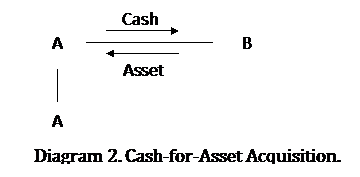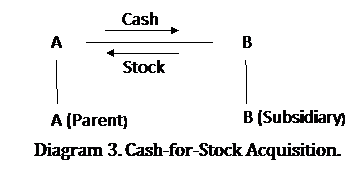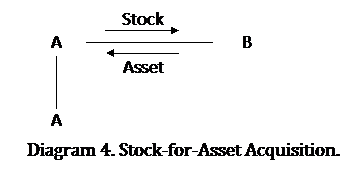 Lei Jiang Law Firm handles mergers or acquisitions for companies big and small. Our law firm can help you negotiate or design purchases of interest and asset, tender offers, restructurings, joint ventures, spin-offs, leveraged buy-outs, and other transactions. On the flip side of the coin, our experienced attorneys can also advise on structuring various takeover defense mechanisms for our corporate clients.
Lei Jiang Law Firm handles mergers or acquisitions for companies big and small. Our law firm can help you negotiate or design purchases of interest and asset, tender offers, restructurings, joint ventures, spin-offs, leveraged buy-outs, and other transactions. On the flip side of the coin, our experienced attorneys can also advise on structuring various takeover defense mechanisms for our corporate clients.
Typically, when buying or selling a small business, the purchase or sale will generally be structured either as an acquisition or as a merger. Acquisitions can be asset purchases, where the buyer purchases the seller’s assets, free and clear of any liabilities, or stock purchases, where the buyer purchases the business’s stock and actually takes over the business, instead of just buying the merchandise or assets. A merger, or the “marriage” of two businesses, shares many characteristics of an asset purchase and a stock purchase, but at the end of the transaction the two businesses are combined as one. We have compiled a brief overview of some of the basic tenets of merger and acquisition for our clients in M&A Basics. Please do not hesitate to contact us with any questions, or to set up an appointment today!
Lei Jiang Law Firm not only has a team of dedicated business lawyers but also has the expertise in other common areas of legal concern in acquisitions and divestitures, including environmental issues, labor and employment related issues, government contracts, intellectual property rights, tax issues, and regulatory challenges. This allows us to offer you a wholly integrated approach to your merger or acquisition. Whether you are a large corporation or a smaller closely held corporation, we have the expertise and dedication to meet your legal needs.
Complex Transactions, Local Focus
Many of our clients are small business owners or dedicated entrepreneurs in Northern Ohio and the greater Cleveland area. These businesses deserve the same degree of knowledgeable, passionate representation as large multinationals, but often cannot afford the sky high costs of a larger law firm. We at Lei Jiang Law Firm understand this, and can confidently meet your M&A needs without the high costs and slower pace of the big law firms. We expertly tailor our practice to meet each of our client’s M&A needs. While we maintain our emphasis on providing top-quality legal services, our rate is the most reasonable one.
M&A Basics
Corporate merger and acquisition transactions are one of the most heavily regulated areas of American law. Five bodies of rules – tax law, accounting standards, state corporate law, federal securities regulation, and antitrust law – play leading roles in this area, but other laws, such as labor law, pension regulations, environmental law, products liability law, debtor-creditor law, contract law, etc., also play roles, and sometimes even major roles in this area.
Acquisition of another firm may be done either through an asset purchase or stock purchase. Generally, in either case, after the transaction the owners/shareholders of the selling firm have no ownership interest in the surviving firm, but the shareholders in the acquiring firm retain their voting power in the surviving firm. From the point of view of the acquirors, their firm has merely changed the form of its assets, for example, cash has become a factory.
In an asset sale, the acquiring firm may choose not to assume the selling firm’s liabilities, and the selling firm continues to exist unless or until it is dissolved. In a stock sale, the acquiring firm buys the entity and holds it as a new subsidiary. The liabilities of the selling firm remain with the firm after the control changes.
In a merger, owners of two entities pool their interests into a single firm. The surviving firm owns the assets and assumes the debts and liabilities belonging to the two previous firms. If the two entities are corporations, the shareholders of both firms become shareholders of the surviving firm, but the relative voting power of a shareholder is diluted in the surviving firm as a result of the combination. If the two firms have similar size, it is called a merger among equals.
There are some special forms of acquisition, such as takeovers and Leveraged Buy-outs (LBOs). In a takeover situation, a stock purchase is offered by the acquiring firm to buy a controlling block of stock in a target firm. If acquiring firm does not have the support of the target firm’s management, the offer is hostile. In LBO, a private group of investors borrows heavily to finance the purchase of the control of an ongoing business.
Acquisitions and mergers could result from corporate restructuring. For example, a firm rearranges its existing capital structure and changes the nature and mix of its investment instruments (stock, notes, bonds, debentures, etc.). If the firm eliminates a minority shareholder interest, it is call a squeeze-out merger.
All acquisitions are complex negotiations, involving a plethora of issues and roomful of professionals. The center of the negotiation is the question of value, both stand-alone value and synergy value.
Basic transactions
| 1. | Stock Swap Statutory Merger. It starts with 2 separate corporations, A & B. In this transaction, B corp merges into A corp. Only A corp survives. There are variations, for example, A corp merges into B corp, or both A corp & B corp merge into C corp. Here, B’ stock is cancelled and B’s shareholders receive A’s shares as consideration. It is a stock-for-stock merger. A corp absorbs the assets and liabilities of B corp. |
 |
| 2. | Cash-for-Asset Acquisition The first step of this transaction is A corp pays B corp cash consideration for B corp’s assets. A corp can choose whether to accept B corp’s liabilities (by offsetting the liabilities against the cash price). In the second step, B corp dissolves and liquidates. After paying all liabilities, the assets and cash are transferred to the B corp’s shareholders in a liquidating distribution. Here, A corp’s shareholders do not vote in the asset acquisition. B corp’s shareholders are cashed out. |
 |
| 3. | Cash-for-Stock Acquisition Here, A corp buys the stock directly from B corp shareholders in exchange for cash. After the transaction, A corp owns the B corp stock, and A corp is the parent corporation of a new subsidiary corporation B corp. There is no change in the certificates of incorporation of either A or B. Only the owner of the B corp shares has changed. If A corp cannot convince all B shareholders to tender their shares, then a minority block of B corp stock remains outstanding. B corp would not be a wholly-owned subsidiary but a partially-owned subsidiary of A corp. |
 |
| 4. | Stock-for-Asset Acquisition Here, A corp pays stocks for B corp’s assets. If A corp also assumes B corp’s liabilities, the end result is the same as in diagram 1 (stock swap statutory merger). The advantage of stock-for-assets acquisition over stock swap statutory merger is that shareholders in the purchasing corporation, under Delaware law, do not have the right to vote on the transaction nor to claim appraisal rights. Most states currently follow Delaware’s lead. |
 |
| 5. | Stock-for-Stock Acquisition See diagram 5. The advantage of the parent-subsidiary structure is that creditors of B corp do not have a claim on A corp’s assets (parent). If one wants to achieve the result of stock swap statutory merger, one needs only merge the wholly-owned subsidiary into parent with a simple board of directors’ resolution (called a short form merger). Therefore, a two-stage stock for stock acquisition can produce the same end results as stock swap merger. But this could be attacked as a de facto merger by disgruntled shareholders. |
 |
These are just a few of the ways that parties can structure their merger or acquisition. There are other forms of transactions, such as Cash-Out Mergers, Triangular Acquisitions, etc. We will custom tailor your merger or acquisition to meet your unique needs and business goals.
Lei Jiang Law Firm provides comprehensive M&A legal services to assist clients in accomplishing a wide range of business transactions, such as stock sales and purchases, asset sales and purchases, mergers, reorganizations, joint ventures, etc. For more detailed information, tailored analyses, and legal opinions, please don’t hesitate to contact us.
